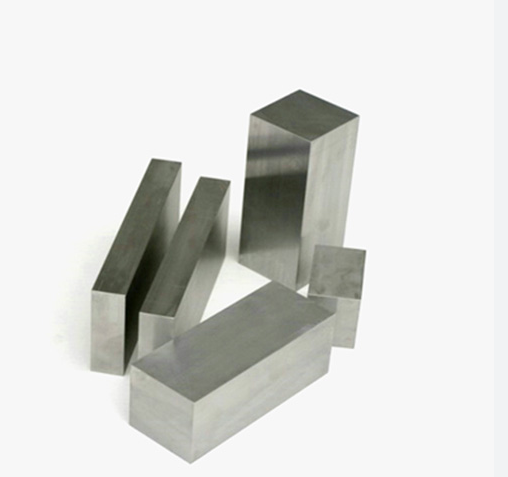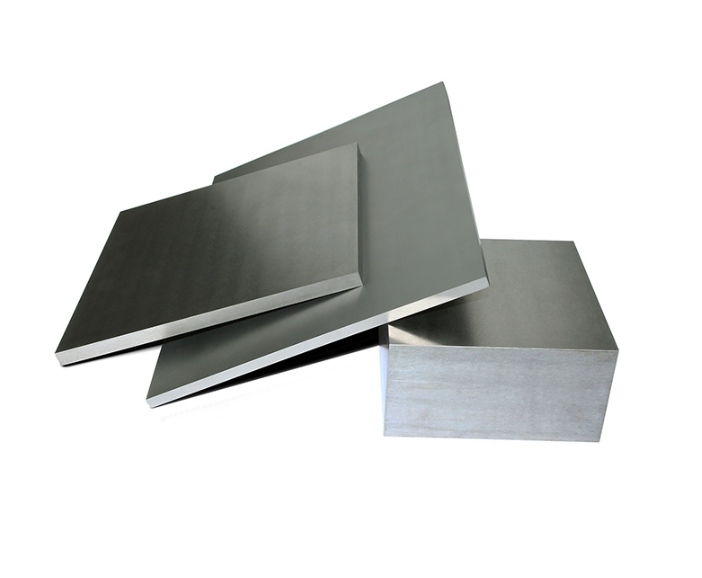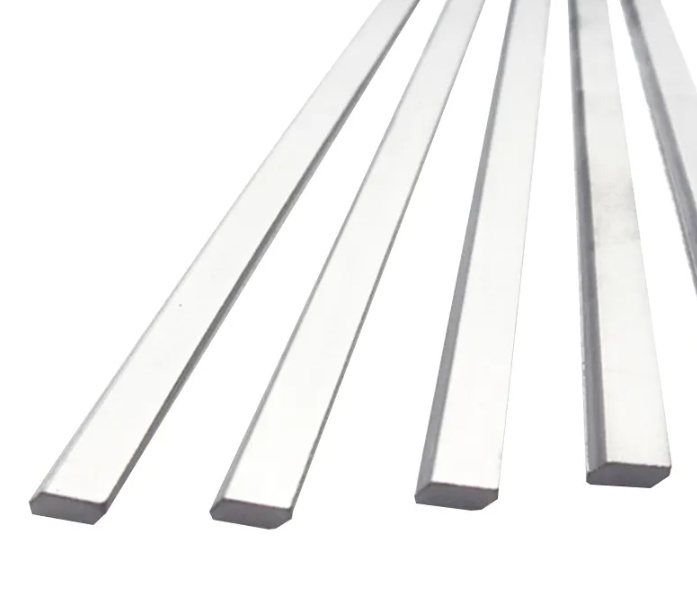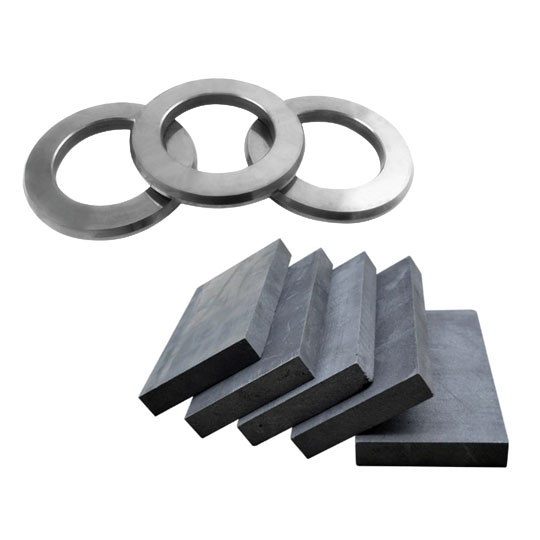내구성과 정밀도가 가장 중요한 까다로운 산업용 애플리케이션의 세계에서, 카바이드 플레이트 챔피언으로 우뚝 서십시오. 매우 단단한 텅스텐 카바이드로 제작되어 마모, 열, 부식에 대한 탁월한 내성을 제공하는 이 엔지니어링된 파워하우스는 다양한 산업 분야에서 필수적인 구성 요소입니다.
이 종합 가이드에서는 카바이드 플레이트의 특성, 제조 공정, 다양한 응용 분야, 그리고 올바른 공급업체를 선택하는 것이 최고의 성능을 달성하는 데 큰 차이를 가져오는 이유를 자세히 살펴봅니다.
카바이드 플레이트는 왜 그렇게 단단할까요?
카바이드 플레이트는 일반적인 금속 플레이트가 아닙니다. 카바이드 플레이트는 극한의 조건을 위해 설계되었으며, 주로 뛰어난 경도로 유명한 텅스텐 카바이드로 제작됩니다. 로크웰 A 스케일(HRA)에서 85-95로 측정되는 이 경도는 가장 단단한 강철을 능가하는 것으로, 카바이드 플레이트는 마모에 대한 저항력이 매우 뛰어납니다.
유형 및 카테고리
카바이드 플레이트는 다양한 유형과 카테고리로 제공되며, 각각 특정 용도에 맞게 설계되었습니다. 이러한 유형을 이해하는 것은 필요에 맞는 플레이트를 선택하는 데 매우 중요합니다.
표준 카바이드 플레이트
표준 카바이드 플레이트는 높은 내마모성과 내구성이 요구되는 일반적인 용도에 사용됩니다. 다양한 요구 사항에 맞게 다양한 크기와 두께로 제공됩니다.
프리포밍 카바이드 플레이트
프리포밍 카바이드 플레이트는 특정 용도에 맞는 특정 모양과 치수로 제조됩니다. 이 플레이트는 맞춤형 공구 및 기계 부품에 이상적입니다.
코팅 카바이드 플레이트
코팅 카바이드 플레이트에는 질화 티타늄 또는 다이아몬드와 같은 탄소와 같은 추가 재료 층이 있어 내마모성과 수명을 더욱 향상시킵니다.
강도의 이면에 숨겨진 과학: 카바이드 플레이트 제조
초경판 제작에는 분말 야금과 정밀 공학의 매혹적인 조합이 필요합니다:
- 파우더 파워: 이 모든 것은 일반적으로 코발트와 같은 바인더 금속과 혼합된 텅스텐 카바이드 분말로 시작됩니다. 그런 다음 이 혼합물을 엄청난 압력으로 금형에 압착하여 "녹색" 컴팩트를 형성합니다.
- 소결: 융합 프로세스: 그런 다음 그린 컴팩트는 제어된 대기 용광로에서 매우 높은 온도로 가열됩니다. 소결이라고 하는 이 과정을 통해 카바이드 입자가 서로 융합되어 매우 조밀하고 견고한 소재가 만들어집니다.
- 셰이핑 및 가공: 소결된 카바이드 플레이트는 연삭, 밀링, EDM(방전 가공) 등 다양한 가공 공정을 거쳐 원하는 치수, 모양, 특징을 얻습니다.
- 최종 마무리: 완벽을 위한 마무리: 카바이드 플레이트는 용도에 따라 특정 표면 거칠기, 평탄도 또는 향상된 특성을 달성하기 위해 래핑, 연마 또는 코팅과 같은 추가 마감 공정을 거칠 수 있습니다.
카바이드 플레이트 특성: 내구성 심층 분석
| 속성 | 설명 | 혜택 |
|---|---|---|
| 경도 | 일반적으로 85~95 HRA 범위의 로크웰 A 척도(HRA)로 측정됩니다. | 압력에 의한 마모, 마모 및 변형에 대한 탁월한 내성. |
| 압축 강도 | 6000MPa(870,000psi)를 초과하는 극한의 압축력을 견딜 수 있습니다. | 무거운 하중과 충격이 수반되는 애플리케이션에 이상적입니다. |
| 인장 강도 | 압축 강도보다는 낮지만, 일반적으로 1400~2800MPa(200~400ksi)로 여전히 인상적인 수준입니다. | 장력 하에서 파손에 대한 저항력을 제공합니다. |
| 내열성 | 최대 1000°C(1832°F) 이상의 고온에서도 그 특성을 유지합니다. | 절삭 공구 및 용광로 내 마모 부품과 같은 고온 애플리케이션에 적합합니다. |
| 내식성 | 화학 물질, 산 및 기타 열악한 환경으로 인한 부식에 대한 내성이 강합니다. | 화학 처리 및 해양 애플리케이션을 비롯한 까다로운 환경에서 사용하기에 적합합니다. |
표 1: 카바이드 플레이트의 주요 특성
카바이드 플레이트가 빛나는 곳: 산업 전반의 응용 분야
카바이드 플레이트는 탁월한 특성 조합으로 다양한 응용 분야에 이상적입니다:
- 금속 성형 및 성형: 스탬핑, 드로잉 및 기타 금속 성형 공정에 사용되는 금형, 펀치 및 마모 플레이트.
- 절단 및 가공: 절삭 공구, 톱 팁, 드릴 비트용 인서트로 탁월한 내마모성과 절삭 성능을 제공합니다.
- 자재 취급: 슈트, 호퍼 및 기타 자재 취급 장비용 라이너를 착용하여 마모와 충격으로부터 표면을 보호하세요.
- 석유 및 가스 탐사: 극한의 강도와 내식성이 요구되는 열악한 환경에서 사용되는 다운홀 드릴링 공구, 마모 링 및 기타 구성품.
- 건설 및 광업: 마모가 심한 환경에서 작동하는 드릴링 장비, 파쇄 장비 및 기타 중장비용 부품을 착용하세요.
올바른 파트너 선택하기: 카바이드 플레이트 공급업체 비교
| 공급업체 | 위치 | 가격 범위(개당, 대략적인 가격) | 스페셜티 |
|---|---|---|---|
| TRUER | 중국 | $50 - $1000+(크기, 복잡성 및 재료 등급에 따라 다름) | 다양한 카바이드 재종, 맞춤형 형상, 신속한 프로토타입 제작, 경쟁력 있는 가격. |
| 샌드빅 코로만트 | 스웨덴 | $80 – $1200+ | 고급 소재, 특수 코팅, 툴링 솔루션에 중점을 둡니다. |
| 케나메탈 | US | $70 – $1100+ | 고성능 코팅, 복잡한 형상, 마모 부품에 대한 전문성. |
| 스미토모 전기 | 일본 | $90 – $1300+ | 고정밀 가공, 고급 세라믹, 다양한 표준 및 맞춤형 크기. |
표 2: 카바이드 플레이트 공급업체 비교
장단점 비교: 장점과 단점 살펴보기
| 장점 | 단점 |
|---|---|
| 탁월한 경도 및 내마모성 | 다른 재료에 비해 높은 비용 |
| 높은 압축 및 인장 강도 | 충격에 의한 취성 |
| 뛰어난 내열성 | 기계화하기 어려움 |
| 내식성 | 제한된 유연성 |
표 3: 카바이드 플레이트의 장점과 단점
기본을 넘어서: 카바이드에 대한 흥미로운 사실
- 텅스텐의 고유한 특성: 텅스텐 카바이드의 핵심 원소인 텅스텐은 모든 원소 중 녹는점이 가장 높기 때문에 고온 응용 분야에 이상적입니다.
- 코발트의 역할: 일반적으로 코발트인 바인더 금속은 카바이드의 특성에 중요한 역할을 합니다. 코발트 함량이 높을수록 인성은 증가하지만 경도는 약간 감소합니다.
- 카바이드 재활용: 텅스텐의 가치로 인해 카바이드 스크랩은 종종 재활용되어 지속 가능성에 기여합니다.
트루어가 돋보이는 이유: 신뢰할 수 있는 카바이드 플레이트 파트너
- 타협하지 않는 품질: 당사는 최고 품질의 카바이드 소재만을 조달하고 제조 공정 전반에 걸쳐 엄격한 품질 관리 조치를 취합니다.
- 엔지니어링 우수성: 숙련된 엔지니어와 최첨단 장비로 구성된 유니티 팀은 정밀한 치수, 엄격한 공차, 탁월한 표면 마감을 보장합니다.
- 맞춤형 솔루션: 당사는 맞춤형 카바이드 플레이트를 전문으로 하며 고객과 긴밀히 협력하여 고객의 고유한 요구 사항을 이해하고 맞춤형 솔루션을 제공합니다.
- 경쟁력 있는 가격 및 적시 배송: 경쟁력 있는 가격과 효율적인 리드 타임을 제공하여 프로젝트에 최고의 가치와 정시 납품을 보장하기 위해 노력합니다.
- 탁월한 고객 지원: 전담 고객 지원팀은 언제나 여러분의 질문에 답하고 기술 지원을 제공하며 원활한 경험을 보장하기 위해 대기하고 있습니다.
자주 묻는 질문: 카바이드 플레이트 관련 질문 해결
1. 내 용도에 맞는 카바이드 재종은 어떻게 선택하나요?
주요 요인으로는 필요한 경도, 인성, 내마모성, 작동 온도 및 환경이 있습니다. 재료 전문가 또는 공급업체와 상담하면 최적의 등급을 결정하는 데 도움이 될 수 있습니다.
2. 카바이드 플레이트의 최대 크기 제한은 무엇인가요?
최대 크기는 공급업체의 역량과 특정 카바이드 등급에 따라 다릅니다. 그러나 많은 공급업체가 길이 또는 지름이 1m를 초과하는 크기의 플레이트도 수용할 수 있습니다.
3. 카바이드 플레이트를 다른 재료에 결합할 수 있나요?
예, 카바이드 플레이트는 애플리케이션 요구 사항에 따라 브레이징, 납땜, 접착 결합 또는 기계적 체결 등 다양한 기술을 사용하여 다른 재료에 결합할 수 있습니다.
4. 카바이드 플레이트는 어떻게 관리하고 청소하나요?
카바이드 플레이트는 비교적 관리가 쉽습니다. 중성 세제나 솔벤트를 사용하여 정기적으로 청소하면 이물질과 오염 물질을 제거할 수 있습니다. 표면을 손상시킬 수 있는 연마성 클리너나 도구는 사용하지 마세요.
5. 맞춤형 카바이드 플레이트의 일반적인 리드 타임은 어떻게 되나요?
리드 타임은 주문 복잡성, 크기, 자재 가용성 및 현재 생산 능력과 같은 요인에 따라 달라집니다. 대부분의 공급업체는 몇 주에서 몇 달에 이르는 경쟁력 있는 리드 타임을 제공하기 위해 노력합니다.




